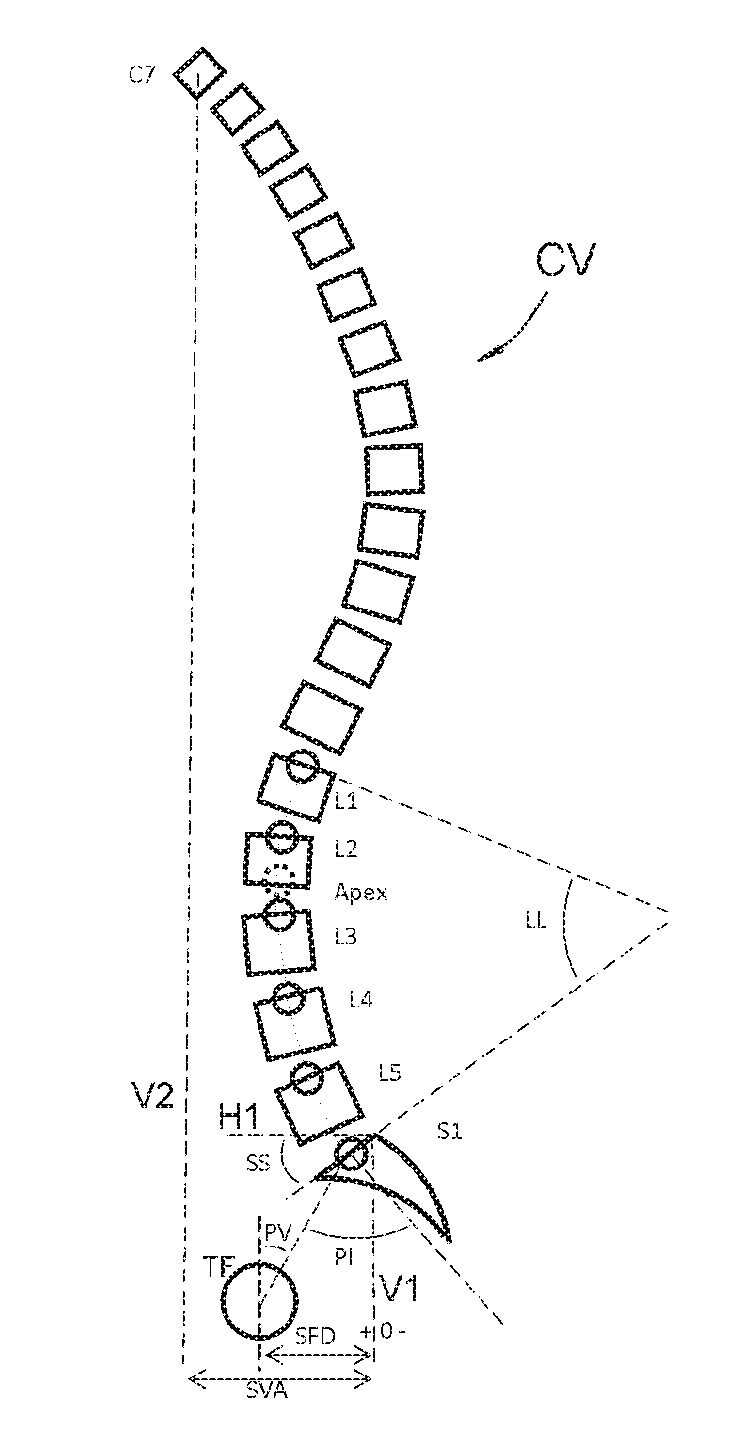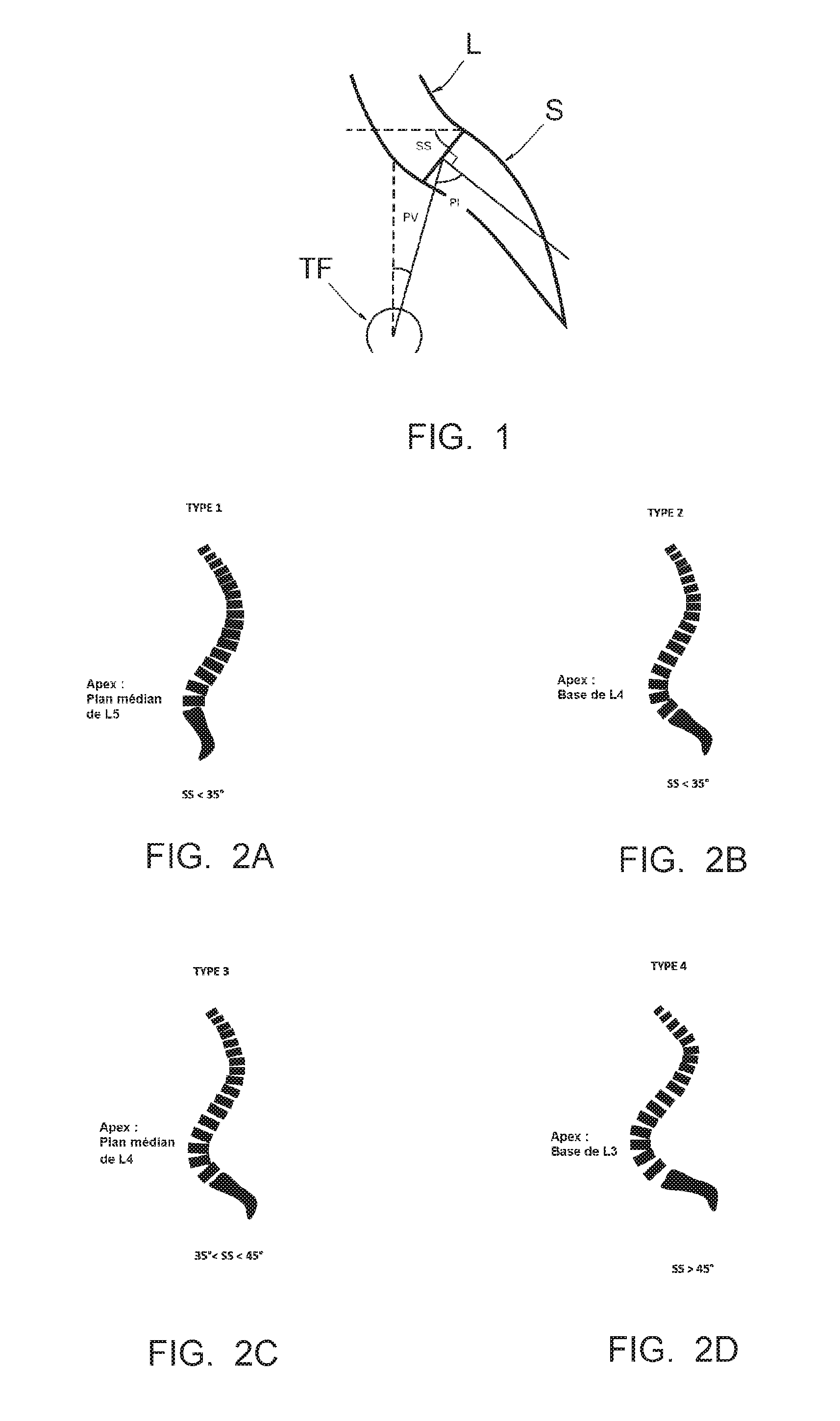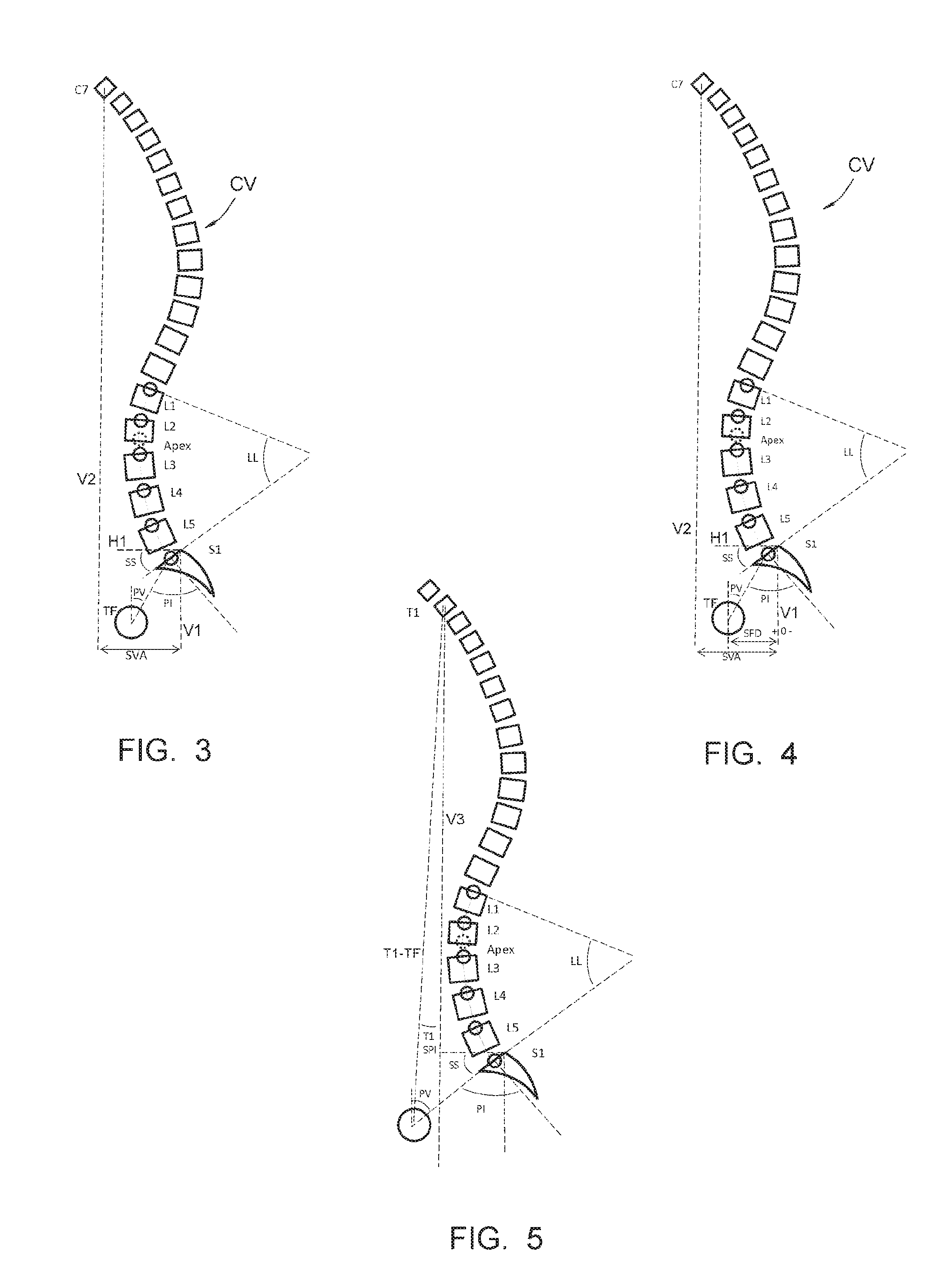Method making it possible to produce the ideal curvature of a rod of vertebral osteosynthesis material designed to support a patient's vertebral column
a technology of vertebral osteosynthesis and ideal curvature, which is applied in the direction of internal osteosynthesis, osteosynthesis devices, instruments, etc., can solve the problems of extending the operation time, unable to exclude the risk of implanting a rod with an ideal curvature, and difficulty in achieving the ideal curvature of a straight rod for a surgeon
- Summary
- Abstract
- Description
- Claims
- Application Information
AI Technical Summary
Benefits of technology
Problems solved by technology
Method used
Image
Examples
Embodiment Construction
[0060]FIG. 3 very diagrammatically shows a vertebral column CV, and includes the following information:
[0061]LL: vertebral segment to be treated;
[0062]L1, L2, L3, L4, L5, S1, C7: the first, second, third, fourth and fifth lumbar vertebrae, the first vertebra of the sacrum and the seventh cervical vertebra, respectively;
[0063]Apex: the forward most point of the vertebral column;
[0064]SS, PV, PI: the aforementioned pelvic criteria;
[0065]TF: the femoral heads, shown by a circle;
[0066]H1 and V1: the horizontal and vertical, respectively, at the posterior upper point of the plate of S1;
[0067]V2: the vertical passing through the center of the 7th cervical vertebra (C7).
[0068]FIG. 4 also mentions a so-called “SFD” value, going from the vertical V1 to the vertical passing through the center of the femoral heads TF.
[0069]FIG. 5 also mentions a so-called “T1 / SPI” value, which is the angle formed between the T1-TF segment going from the center of the first dorsal vertebra, called T1, to the ce...
PUM
 Login to View More
Login to View More Abstract
Description
Claims
Application Information
 Login to View More
Login to View More - R&D
- Intellectual Property
- Life Sciences
- Materials
- Tech Scout
- Unparalleled Data Quality
- Higher Quality Content
- 60% Fewer Hallucinations
Browse by: Latest US Patents, China's latest patents, Technical Efficacy Thesaurus, Application Domain, Technology Topic, Popular Technical Reports.
© 2025 PatSnap. All rights reserved.Legal|Privacy policy|Modern Slavery Act Transparency Statement|Sitemap|About US| Contact US: help@patsnap.com



